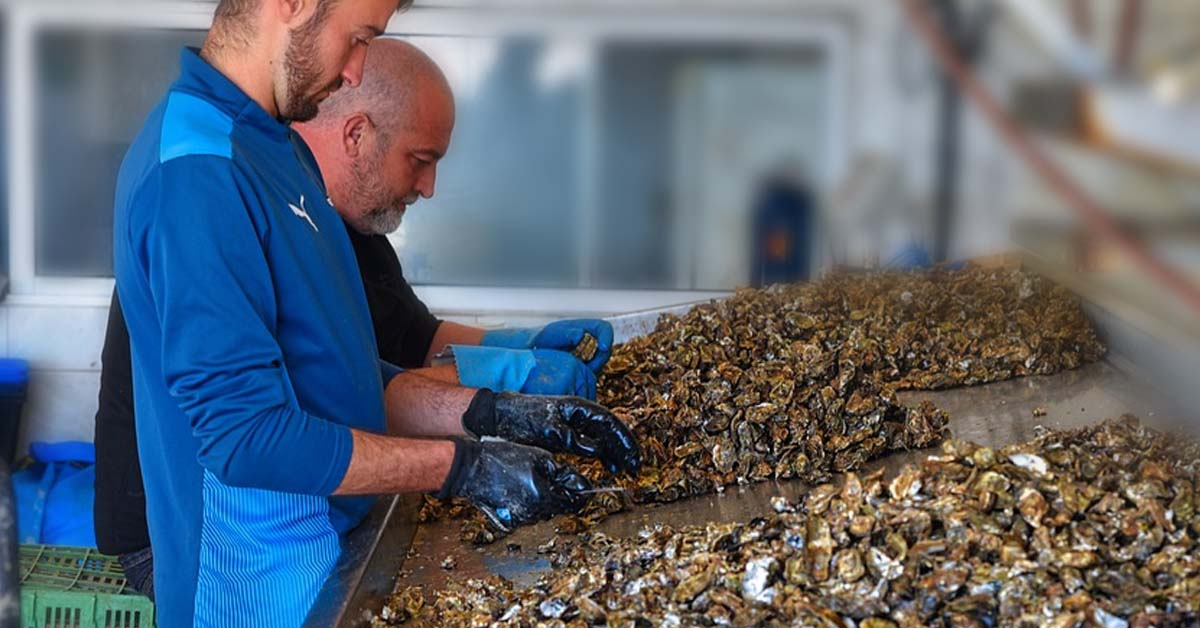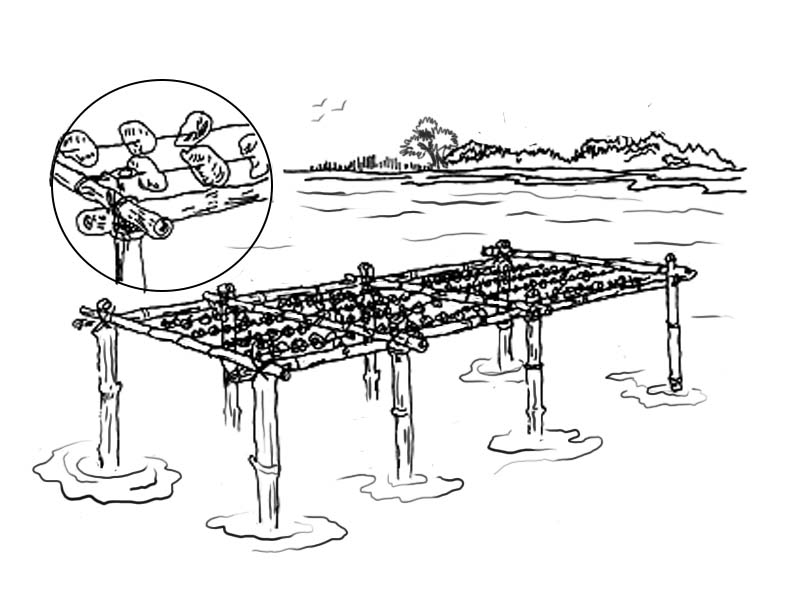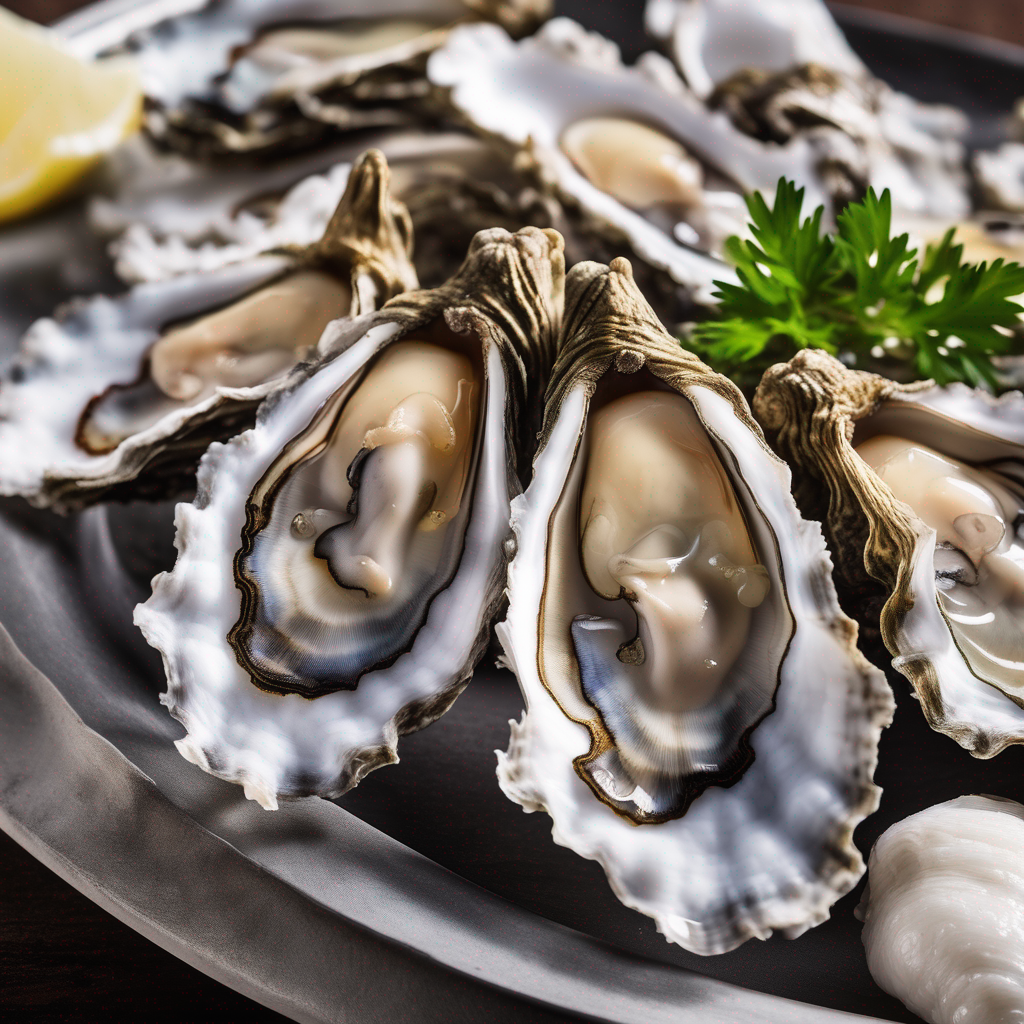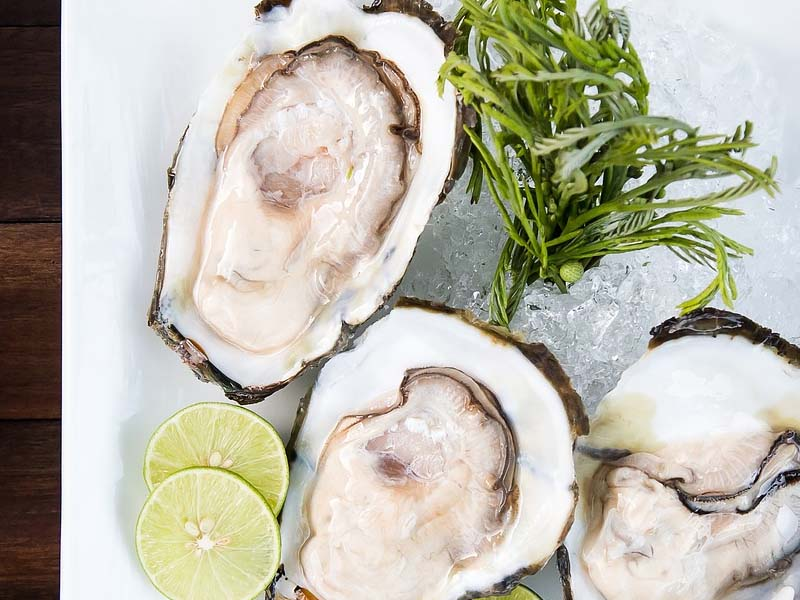
The briny taste of a fresh oyster shucked right from its shell offers a singular sensory experience unlike any other.
For oyster lovers, that salty sweetness bursting with ocean essence epitomizes the flavor of the sea. But not all oysters taste the same. Their flavor profiles can vary dramatically based on the oyster's species, harvest location, and farming methods.
We'll cover the basics of oyster farming, what makes top-of-the-water column oysters unique, and how to bring that fresh-shucked taste home through oyster kits. Keep reading to learn more.
What Is Oyster Farming?

Oyster farming involves cultivating oysters in controlled environments for human consumption rather than harvesting them from wild oyster beds. Adult oysters are conditioned to spawn larvae, which are set on clutch materials. After attaching, the spat oysters are transferred to nurseries until they reach market size. Oyster farmers use systems like bags, cages, and rafts to contain and feed the developing oysters. The goal is to supply high-demanding markets with consistent quantities of quality oysters.
How Does Oyster Farming Influence Taste?
Oyster farming impacts flavor based on species, grow-out methods, and location. Oyster farms may select species like Pacific or Eastern oysters for distinct flavors. Cultivation techniques also affect taste: bottom-cultured oysters tend to be more robust, while suspended oysters are milder. But position in the water is a major determinant of oyster flavor.
The Influence of Water Column Position on Oyster Flavor
An oyster's position in the water column significantly influences its taste. Oysters are filter feeders that can filter nutrients at different depths. Surface oysters get more phytoplankton and warmer water, leading to a sweeter, delicate taste. Deeper oysters experience colder temps and different food, giving a delicious briny flavor with robust and hearty shells. The constant motion of surface cultivation provides ideal conditions for premium oyster flavor.
White Stone Oysters: A Unique Taste Experience

White Stone Oysters, based in the Virginia Chesapeake Bay, offers a uniquely flavorful oyster experience thanks to our innovative farming techniques. By keeping our oysters constantly in motion at the water's surface, we expose them to optimal conditions for robust growth and premium taste development.
The perpetual tumbling motion and floating cages allow for increased water flow, elevated food supply, and reduced crowding. Our oysters get the best of both worlds - the nutrients of freshwater from rivers and the salinity and minerals of seawater.
FAQs About Oyster Farming and Flavor
How does the water column position affect the oyster's taste?
An oyster's depth in the water column greatly impacts its flavor profile, as the water conditions vary at different levels. Oysters grown near the surface get more exposure to sunlight and warmer temperatures, leading to increased phytoplankton for food, which lends a sweeter, more delicate taste. Oysters from deeper down experience colder water temperatures and eat different phytoplankton, giving them a more robust, brinier flavor.
What do White Stone Oysters taste like?
White Stone oysters are known for their plump, savory flavor with mild brine and sweet, buttery notes. The unique surface tumbling of White Stone oysters produces a very clean yet full-bodied taste. The balance of river and ocean water where they are grown gives them a touch of freshwater fruitiness that is still grounded by a solid salty sea finish. Every White Stone oyster encapsulates that quintessential Chesapeake Bay essence in its distinct flavor profile.
What makes Chesapeake seafood special?
The Chesapeake Bay region is renowned for its incredible seafood, especially its famous oysters. The combination of river water, which is fresh, and ocean water, which is salty, produces an optimal light saltwater mixture. Diverse phytoplankton in the bay provide a balanced, mineral-rich diet for oysters and other shellfish. The shallow, warm waters help produce plump, sweet-tasting oysters. Strong currents tumble and strengthen the oyster shells over time. Long-standing watermen traditions continue today with sustainable practices. With its distinct flavor, a Chesapeake oyster encapsulates centuries of coastal culture and cuisine in each salty, sweet sip.
Oyster Kits: Bringing the Farm to Your Kitchen

An oyster farm like White Stone Oysters provides a variety of premium shucked oysters on ice, ready to eat. Oyster kits include freshly farmed oysters, red hot clay sauce, and/or a Deglon oyster knife. With minimal prep, you can host an oyster party or enjoy pristine oysters without leaving your home. The oysters arrive ultra-fresh in insulated packaging, almost like you rowed out and picked them yourself. Oyster kits capture the magic of the sea in a box, delivered straight to your door.
Final Thoughts on the Flavorful World of Oyster Farming
Eating a fresh oyster is like tasting the ocean's essence distilled into a single bivalve. But oyster flavor depends heavily on how and where it was raised. Understanding aquaculture techniques like water column position provides insight into nuances of oyster farming. Companies like White Stone show how mariculture innovation produces superior seafood through surface-level tumbling for a balanced Chesapeake oyster. For the fullest flavor adventure, expand your oyster horizons by sampling different farmed varieties. With minimal effort, you can gain a world of delicious diversity.
← Older post Newer post →
